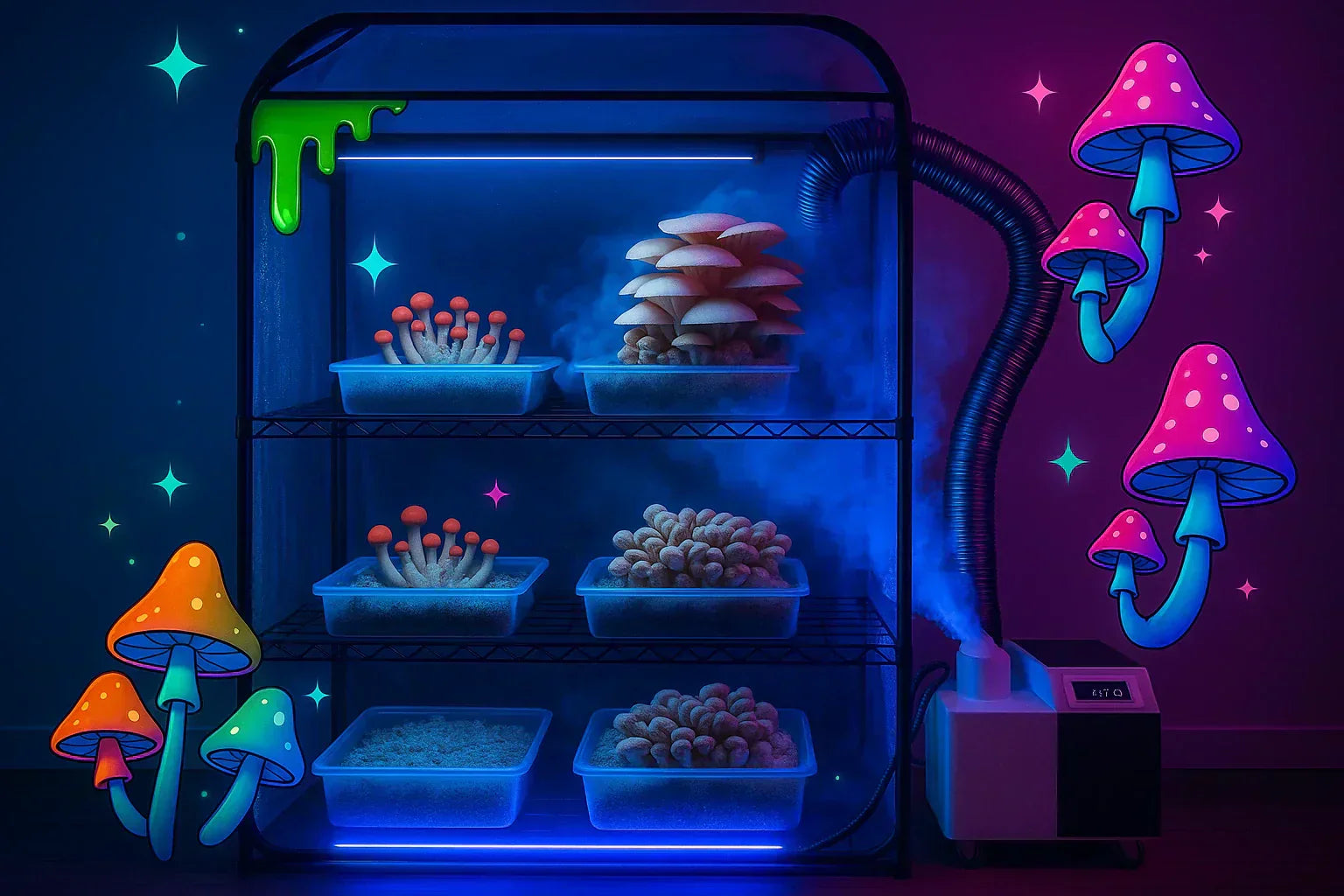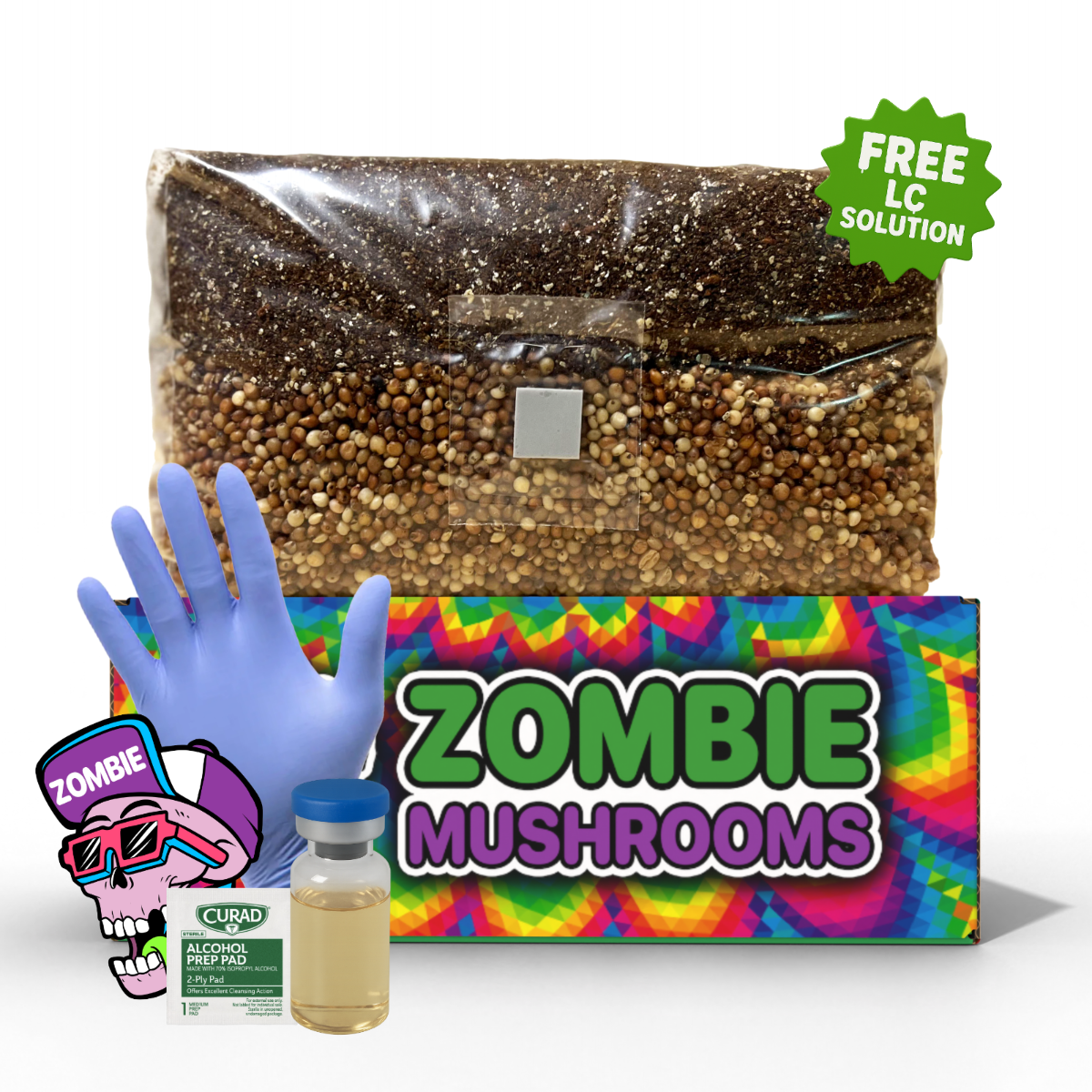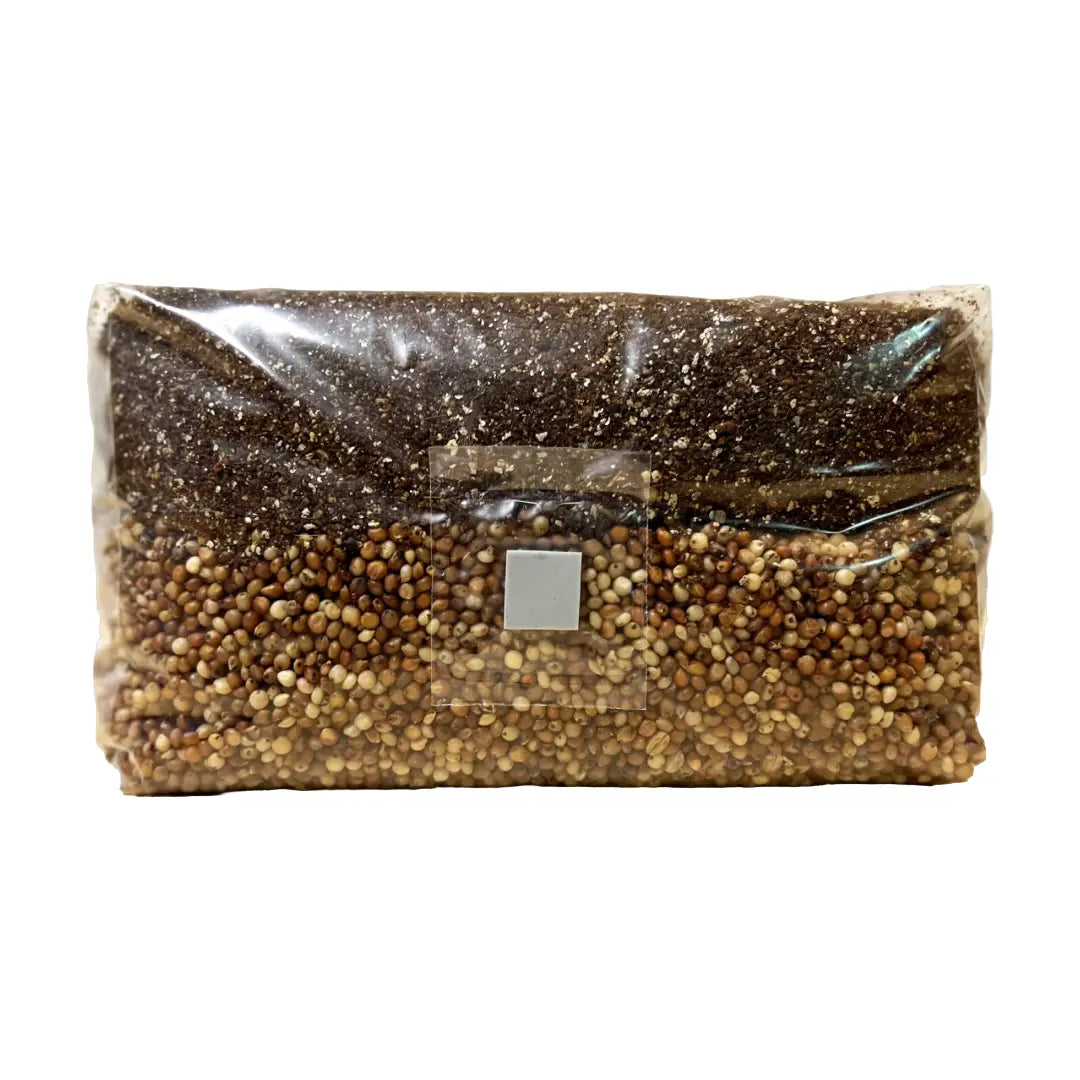- 🍄 Mushrooms require 85–95% humidity during fruiting for optimal growth and yield.
- 💨 Ultrasonic humidifiers are ideal for small to medium indoor mushroom setups.
- 🛠️ Poor humidity control can lead to failed flushes, contamination, or fruiting body deformities.
- 🌬️ Balanced humidity and adequate air exchange can boost harvests by up to 30%.
- ♻️ Routine maintenance of your humidifier helps prevent mold, clogs, and bacterial outbreaks.
Humidifiers for Mushroom Growing: Do They Work?
Mushrooms thrive in moist, shaded environments—think forest floors, damp logs—yet many indoor setups fall short in humidity. Whether you’re running a mushroom grow tent, a fruiting chamber, or small-scale indoor grow operation, maintaining moisture is crucial. That’s where a humidifier for mushrooms or grow room humidifier can help. And when paired with Mushroom Grow Bags, which retain moisture superbly and reduce environmental fluctuations, you can achieve consistent growth and improved yields. This guide covers how humidifiers work in mushroom cultivation, what types are best, how humidity should vary through different growth stages, and avoiding common pitfalls.

Why Humidity Matters for Mushroom Cultivation
Mushrooms are about 85-95% water. In low-humidity conditions—typical of many indoor grow rooms—fruiting suffers. When air is properly moistened by a good humidifier for grow tent or chamber, the substrate surface remains soft, making it easier for pins to form and develop into full mushrooms. Healthy humidity also keeps the mycelium vigorous, which improves yield, reduces delay, and ensures your mushrooms mature at the expected time.
Humidity does more than just help growth; it starts it. For mushrooms like oyster, shiitake, lion’s mane, and enoki, humidity needs to reach certain levels. This tells the mycelium it’s time to move from incubating to fruiting. If the air is too dry, the organism might stay in a growing state longer than it should. Or, it might not grow any fruiting bodies at all.
But too much humidity, especially with still air, can cause bacterial blotch, mold, and unwanted growths like Trichoderma. So, controlling humidity for mushrooms is not just about mist. It means keeping moisture, air flow, and room temperature in balance all the time.
📊 Mushrooms like oyster and shiitake typically require humidity levels between 80–95% during fruiting (Shoemaker, 2021).

Ideal Humidity Ranges for Different Growth Stages
Mushroom cultivation has different growth stages. Each stage needs different humidity levels. If you don't adjust humidity at the right time, growth can stop, pins might not form, or contamination can happen.
Colonization Stage (~70% RH)
- At this stage, the mycelium spreads through the substrate.
- High humidity is not needed and can even raise the risk of mold or bacteria contamination.
- A bit drier air helps make mycelial threads stronger and stops outside spores from getting in.
Pinning or Primordia Formation (90–95% RH)
- Light, temperature drops, and more humidity cause this stage to begin.
- A sudden increase in humidity is like rainfall. It tells the mycelium to start making pins.
Fruiting Body Development (85–95% RH)
- Once pins are there, high humidity must be kept up for the caps and stems to grow fully.
- Moisture helps cells grow bigger and stops mushroom tissue from drying out or cracking.
Post-Flush/Recovery (80–90% RH)
- After you harvest, keeping moderate humidity helps the mycelium rest and grow back.
- This setting is good for starting a second or third flush from the same substrate.
When you are careful about humidity at each stage, you lower risks and get steady, high-yield flushes.
Common Methods of Mushroom Humidity Control
You can control humidity in many ways, from simple DIY methods to advanced systems.
Manual Misting
- This is simple but takes a lot of work.
- It's best for small home grows or hobbies.
- Moisture levels can be uneven, leading to either dry conditions or too much water.
Perlite or Humidity Trays
- People use these in closed containers like monotubs or shotgun fruiting chambers.
- They are simple, cheap, and don't need power, but you can't adjust them.
- They work well if you also fan daily and check on them, but they are not exact.
Automated Humidifiers
- These range from small desktop humidifiers to big systems for industrial use.
- You can change their mist output. They also connect to timers or controllers.
- They are key for getting steady results, especially when mushrooms are fruiting.
Foggers and High-Pressure Misting Systems
- Growers use these in bigger grow rooms or vertical rack systems.
- They spread a very fine mist.
- They work best with air flow systems and digital controllers.
Even a small cost for automated humidity will likely help you avoid failed flushes and make your substrates last longer.

Types of Humidifiers for Mushroom Grow Rooms
When selecting a humidifier for your mushroom grow setup, choose a model matched to your space and humidity targets:
-
Ultrasonic Humidifiers: Great for small to medium fruiting chambers or tents; produce fine cool mist, are quiet, and use less power.
-
Cool Mist / Evaporative Humidifiers: Ideal for mid-sized grow rooms. They’re safer around contamination because they don’t produce warm moisture or heat spots.
-
Foggers or High-Pressure Mist Systems: Best when you need heavy coverage in large or high-density grow tent setups. Use them with good airflow to avoid pooling moisture.
-
Automated Humidifier Systems with Controls: For serious cultivators, a humidifier paired with hygrometers, humidistats, or smart-plugs helps maintain stable humidity without manual adjustments.
Make sure your humidifier matches the volume of your mushroom grow tent or fruiting chamber. A small humidifier underpowered for a large tent might lead to uneven humidity and dry patches — undermining all the benefits.
 How to Choose the Best Mushroom Grow Room Humidifier
How to Choose the Best Mushroom Grow Room Humidifier
When you pick a humidifier for your mushroom grow room, look at your setup fully:
🔲 Grow Area Volume
- Figure out the cubic size of your space.
- Make sure the humidifier's power matches how much mist you need. A small humidifier in a big grow tent will have to work too hard.
🔌 Power Source & Consumption
- Small ultrasonic units can often use normal 110V outlets.
- Bigger foggers or evaporative humidifiers might need their own power lines if you use more of them.
🔄 Maintenance Requirements
- Machines that move hard water will need descaling.
- Models with wicking systems should have parts you can replace or wash.
🔁 Automation
- Look for systems that work with humidistats or smart plugs for control from afar.
- Some advanced units connect to apps via Bluetooth or Wi-Fi.
📈 Budget
- You can set up a small grow chamber with a DIY humidifier and timers for less than $100.
- Bigger, commercial setups might cost over $1,000 for environmental control. But they also produce a lot more.
💡 Tip: Many indoor growers use ultrasonic disc mist makers submerged in tubs, paired with fans to distribute fine mist evenly (Newton, 2021).
Tools to Monitor and Regulate Humidity
You need to measure and keep humidity steady. Here are some extra tools for growers who want to be ready:
- Digital Hygrometers: These show current and highest moisture levels. Some have many sensors and give alerts.
- Remote Sensors: These let you check levels from your phone.
- Humidistats: These are automatic tools that keep humidity at a set level without you needing to do it by hand.
- Cycle Timers: These let you set misting times, like 15 minutes on, then 45 minutes off.
- Combined Environmental Controllers: These are advanced systems that check humidity, temperature, CO₂, and fan use all at the same time.
Adding just one or two of these tools can make your mushroom humidity control much better.

Humidifier Maintenance Tips
Like your substrate or tools, humidifiers need regular care:
- 👃 Check for Smells: A moldy or bad smell often means mold or bacteria are inside the unit.
- 💧 Use Clean Water: Tap water has minerals that build up and can block ultrasonic plates.
- 🧽 Clean Each Week: Take apart and wash trays, tanks, and nozzles.
- ⚙️ Check O-Rings and Fans: Moving parts in misters can wear out after a lot of use.
- 🧼 Clean After Each Flush: Clean well between flush cycles to stop germs from spreading.
Doing regular upkeep helps the humidifier work its best. It also keeps humidity levels safer and makes the device last longer.

Managing Humidity Inside a Fruiting Chamber
The fruiting chamber is where mushrooms grow. Controlling this changing space helps you get good or even great harvests.
Tips for Best Humidity & Air Exchange
- Put humidifiers on raised stands so water does not gather.
- Use misting with fans controlled by computers or timers for Fresh Air Exchange (FAE).
- Use fans that blow air sideways for even mist spread.
- Check humidity levels near the substrate, where mushrooms truly grow.
Common Fruiting Chamber Types
- Monotubs: These are closed units, often lined with PVC, and small.
- Martha Tents: These are tall greenhouses that hold trays or shelves in rows.
- Converted Closets or Cabinets: Many city people use these.
- Commercial Shelving Racks: These use vertical space with foggers and fans above them.
📊 Research shows yields can increase by up to 30% in setups with steady high humidity and good air exchange (Rodriguez, 2020).

Potential Problems from Over- or Under-Humidification
Both low and high humidity can cause problems:
🚫 Too Much Humidity
- Water drops on mushroom caps can lead to rot and bacterial blotch.
- Little air flow lets harmful things like Trichoderma or cobweb mold grow well.
- Pins get packed tight and do not grow fully.
⚠️ Too Little Humidity
- Pins stop growing before they are ready.
- Mycelium dries out instead of getting new life between flushes.
- Dry mushrooms mean smaller harvests, dry caps, and they won't sell as well.
Humidity control is not a "set it and forget it" job. It's a changing process that you must adjust as conditions shift or as your crops react.
Frequently Asked Questions
-
Do I need a humidifier in a mushroom grow tent?
If your grow tent or fruiting chamber can’t consistently maintain 80-95% relative humidity through simple methods (misting, trays, etc.), adding a humidifier for grow tent setups often makes a big difference in pinning and flush quality. -
What’s the best humidifier for mushrooms?
For smaller spaces, ultrasonic or cool-mist units work well. For larger tents or grow rooms, foggers or high-output misting systems combined with humidity controllers are preferred. -
How do you set humidity levels at different growth stages?
During colonization: around 65-75% RH; Pinning: 90-95% RH; Fruiting: 85-95%; Post-flush recovery: 80-90%. Matching these stages helps avoid issues like contamination or dry caps. -
How to maintain a humidifier for mushrooms?
Regular cleaning (trays, tanks, nozzles), using distilled water to limit mineral buildup, replacing wicks or filters as needed, and keeping the unit tolerably clean between flushes are key. -
Can Mushroom Grow Bags replace a humidifier?
Grow Bags help maintain moisture around your substrate on their own, especially in small grows. However, in larger tents or humidified fruiting chambers, a humidifier still helps maintain stable ambient RH and supports better fruiting.
Final Thoughts: Do Humidifiers Work for Mushroom Growing?
The short answer? Yes—humidifiers work very well for mushroom growing if you use them correctly. They are not just an extra part; they are a key piece of good mushroom growing. A well-planned humidity system makes a big difference in the mushroom's shape, taste, size, and how fast it grows. This is true whether you are building your first monotub or growing to a fully automatic grow room.
In the end, it's not about buying the most costly device. It's about using the right humidifier for your setup and running it well. When used with airflow and cleanliness, humidifiers let you keep good growing conditions steady. This helps you get the most from your flushes and lose the least.
Do you want to upgrade your mushroom grow room humidifier or start from scratch? Zombie Mushrooms has carefully checked equipment and beginner kits chosen by growers who have seen it all. Use the tools that give steady, exact results.
Citations
Newton, T. (2021). High humidity mushroom cultivation systems: A practical guide. Urban Mushroom Farming Journal.
Rodriguez, A. (2020). Impact of humidity control on small-scale mushroom yields. Mushroom Science Quarterly, 12(3), 45–53.
Shoemaker, L. (2021). Growing gourmet and medicinal mushrooms indoors. Indoor Fungi Growing Manual.



